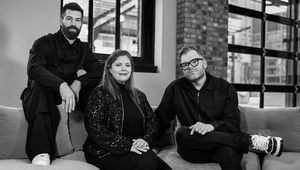
6 Steps to Leverage Your Position for Social Change

No matter what level, position, or role you might be filling in your current job or career, we all have specific power and privilege we can leverage to effect social change. Whether it’s for a community we belong or one we’ve committed our allyship to there are many ways in which we can each advance, uplift, and protect the goals of historically marginalised and resilient communities.
At Havas, we believe that every employee has the capacity to advance allyship and social change. We value the responsibility that comes with creating powerful and culturally centralized creative work and know our clients expect us to deliver products and services that spark conversation, uplift marginalised voices, and create with a nuanced and inclusive eye. Here are a few steps everyone—leaders, employees, freelancers, and even clients—can take to continue moving the needle.
Step 1. Assess What Privileges and Powers You Have Access To
Depending on your role, where you sit within an organization, your responsibilities in your personal life, and a myriad of other factors, the tools you can leverage to support social justice may look vastly different than those of your peers and colleagues. It’s important to take inventory and see what unique things you can bring to the table. Consider the following:
· Does your current role allow you to make strategic decisions?
· Do you have access to leadership?
· What does your time commitment look like?
· What issues exist within your specialization or field? (ex. If you’re a Creative Director perhaps increasing the representation of women in senior creative roles has been difficult to advance)
· Does your current position give you power different from your peers?
· Do you have a voice within your organization?
Step 2. Review Current Work for Opportunities
In almost every type of work—which is never truer than for creative and public relations work—there are opportunities to leverage our position to influence social justice. Perhaps you’re currently working on an advertising campaign; how might you make changes to increase representation? How might the product or service be important to a single—or multiple—communities? What voices aren’t being represented during brainstorming sessions and creative briefs? Reviewing the work we’re currently doing, or about to begin, through the lens of social justice and allyship can help deliver impactful and resonate experiences.
Step 3. Don’t Forget About Your Passions
Many of us bring our passions and hobbies to work as a means of leveraging special skills or interests for our work. For example, one of my skills and passions is writing. I leverage this passion by amplifying diverse voices through storytelling, articles such as these, and reviewing content and comms for inclusive language. What are your passions? Can you integrate them into your work? Can you take passions that you’ve brought into your career and leverage them to support others? Consider the following:
· Can you volunteer your time to specific group to teach, educate, support, or entertain with your passion?
· Can your passion generate revenue for a cause?
· Can your passions provide insights into the issues within a certain field? (ex. If you’re passionate about music perhaps you can lend insight into the disparity between Black performers and non-Black performers.)
Step 4. Network and Communicate
Social justice work is group work. Advancing the causes of a group of people requires more than just one person. Whether you’re a leader or an entry level employee, make sure you’re communicating with your peers, reports, and leaders the importance of work which advances or is view through a specific lens. And don’t forget to connect with likeminded people as well.
Step 5. Form a Plan for the Business Imperative
It would be wonderful if we lived in a world in which businesses altruistically supported different demographics without any expectation of reward or social capital. But those companies are few and far between. Understanding your business or organizations goals and commitments, and finding alignment between those and the causes you want to advance, is essential to getting stakeholder buy-in. Consider the following:
· How will a specific cause, partnership, activity, or goal effect your company’s bottom-line in the short- and long term?
· Does the work you want to do align with your company’s CSR or values?
· Are your leaders also passionate about the work you want to do? Or are they open to learning about the importance of the work?
· Do you have a Social Impact, DEI, or CSR team that you can partner with?
Step 6. Tap Into Work Being Done
Many companies have Employee Resource Groups (ERGs), DEI councils and committees, pro-bono partnerships, and more that you might lend your specific role’s power and privilege to. Consider the impact you can bring to those groups and programs by participating. If you’re a leader, perhaps you can serve an executive sponsor and help break through some of the red tape. Perhaps if you’re a junior employee you can communicate the needs of specific groups to help influence company retention.
Still feeling as if you aren’t sure where to start? Ask someone what you can do. Whether it’s your local DEI professional, an ERG leader, or someone that you’ve seen and identified as passionate about advancing the social justice for a specific group, don’t be afraid to ask how you might leverage your position to help.












